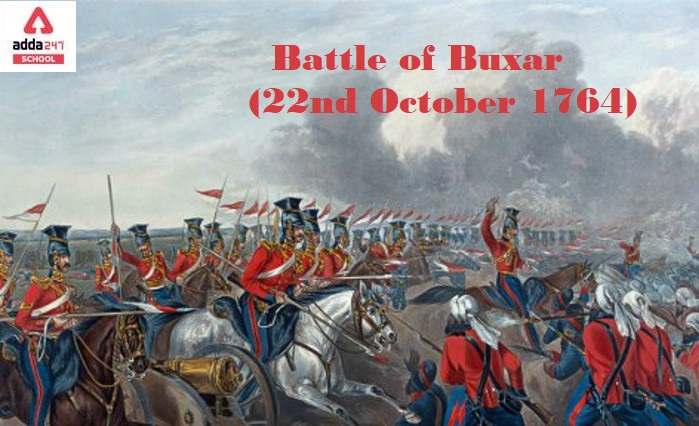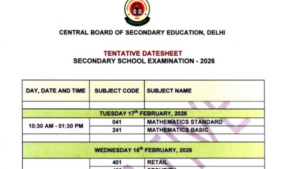Battle of Buxar was fought between whom
The Battle of Buxar was fought on 22nd October 1764. Battle of Buxar and Battle of Plassy is the most famous battles in the history of India because it paved the way for the British East India Company to rule India for the next 183 years. Battle of Buxar was fought between the British East India Company and the combined armies of Nawab of Bengal, Nawab of Awadh, and Mughal Emperor. It is the first battle where the Mughals fought and were defeated by the East India Company. Nawab of Bengal Mir Qasim made an alliance with Nawab of Bengal Shuja-ud-Daulah and Mughal Emperor Shah Alam II. British East India Companies forces were led by Hector Munro. In the Battle of Buxar, forces of East India Company defeated the combined alliance of Indian rules, and the Battle of Buxar was concluded by the surrender of Mughal Emperor Shah Alam II and the British East India Company made Allahabad Treaty. After the battle, Bengal came into possession of the British East India Company. In this article, we will discuss the important history topic Battle of Buxar. Bookmark this page to get all the related articles.
Battle of Buxar was fought in which year
Battle of Plassy resultant, Siraj-Ud-Daulah to expelled as Nawab of Bengal, and Mir Jafar, an army commander of Siraj, took his position and become Nawab of Bengal. After becoming the new Bengal nawab, the British used Mir Jafar as a puppet, in spite of being Nawab of Bengal, Mir Jafar can’t take any decision he has to follow the decisions taken by East India Company. Mir Jafar had ties to the Dutch East India Company. British East India Company did not want any connection between Dutch East India Company and Bengal Nawab. Hence, the British East India Company wanted Mir Qasim, son-in-law of Mir Jafar to succeed as Nawab of Bengal. Although Mir Jafar was not ready to resign. He had resigned in favor of Mir Qasim under East India Companie’s pressure. East India Company awarded a Rs 1,500-per-year pension to Mir Jafar.
Read More: Women Empowerment Essay in English
Battle of Buxar in Hindi
बक्सर की लड़ाई 22 अक्टूबर 1764 को लड़ी गई थी। बक्सर की लड़ाई और प्लासी की लड़ाई भारत के इतिहास में सबसे प्रसिद्ध लड़ाई है क्योंकि इसने ब्रिटिश ईस्ट इंडिया कंपनी के लिए अगले 183 वर्षों तक भारत पर शासन करने का मार्ग प्रशस्त किया। बक्सर की लड़ाई ब्रिटिश ईस्ट इंडिया कंपनी और बंगाल के नवाब, अवध के नवाब और मुगल सम्राट की संयुक्त सेनाओं के बीच लड़ी गई थी। यह पहली लड़ाई है जहां मुगल ईस्ट इंडिया कंपनी से लड़े और हार गए। बंगाल के नवाब मीर कासिम ने बंगाल के नवाब शुजा-उद-दौला और मुगल सम्राट शाह आलम द्वितीय के साथ गठबंधन किया। ब्रिटिश ईस्ट इंडिया कंपनी की सेना का नेतृत्व हेक्टर मुनरो ने किया था। बक्सर की लड़ाई में, ईस्ट इंडिया कंपनी की सेनाओं ने भारतीय नियमों के संयुक्त गठबंधन को हराया, और बक्सर की लड़ाई मुगल सम्राट शाह आलम द्वितीय के आत्मसमर्पण से संपन्न हुई और ब्रिटिश ईस्ट इंडिया कंपनी ने इलाहाबाद संधि की। युद्ध के बाद, बंगाल ब्रिटिश ईस्ट इंडिया कंपनी के कब्जे में आ गया। इस लेख में, हम महत्वपूर्ण इतिहास विषय बक्सर की लड़ाई पर चर्चा करेंगे। सभी संबंधित लेख प्राप्त करने के लिए इस पृष्ठ को बुकमार्क करें।
बक्सर का युद्ध किस वर्ष लड़ा गया था
प्लासी की लड़ाई के परिणामस्वरूप, सिराज-उद-दौला को बंगाल के नवाब के रूप में निष्कासित कर दिया गया, और सिराज के सेना कमांडर मीर जाफर ने अपनी स्थिति ले ली और बंगाल के नवाब बन गए। बंगाल का नया नवाब बनने के बाद अंग्रेजों ने मीर जाफर को कठपुतली के रूप में इस्तेमाल किया, बंगाल का नवाब होते हुए भी मीर जाफर ईस्ट इंडिया कंपनी द्वारा लिए गए निर्णयों का पालन करने का कोई निर्णय नहीं ले सकता। मीर जाफर का संबंध डच ईस्ट इंडिया कंपनी से था। ब्रिटिश ईस्ट इंडिया कंपनी डच ईस्ट इंडिया कंपनी और बंगाल नवाब के बीच कोई संबंध नहीं चाहती थी। इसलिए, ब्रिटिश ईस्ट इंडिया कंपनी मीर जाफर के दामाद मीर कासिम को बंगाल के नवाब के रूप में सफल बनाना चाहती थी। हालांकि मीर जाफर इस्तीफा देने को तैयार नहीं थे। उन्होंने ईस्ट इंडिया कंपनी के दबाव में मीर कासिम के पक्ष में इस्तीफा दे दिया था। ईस्ट इंडिया कंपनी ने मीर जाफर को 1,500 रुपये प्रति वर्ष पेंशन प्रदान की।
The primary Reason for the Battle of Buxar was fought in the year 1764
Mir Qasim become the Bengal of Nawab but he didn’t like the interference of the British East India Company. To become an independent ruler, he wanted to shift his capital from Calcutta to Munger Fort. He hired some experts to train his army, this cause conflict between British EIC and Mir Qasim. He was not granting free trade passes and special privileges to the British East India Company and was treated EIC and Indian merchants the same. These combined factors fuelled the East India Company to dethrone Mir Qasim, Nawab of Bengal and war broke out between East India Company and Nawab of Bengal. Then Mir Qasim went to Awadh and made an alliance with the Awadh ruler and Mughal Emperor to fight against the British East India Company.
Read More: Computer Shortcut Keys List
Battle of Buxar: Aftermath
- Mir Qasim ran away from the battleground, while the other two surrendered to the English forces.
- Mir Qasim, Shuja-Ud-Daula, and Shah Alam-II were defeated on October 22, 1764
- Major Hector Munro’s victory in a vital battle was aided by Robert Clive.
- The Battle of Buxar came to a conclusion in 1765 when the Treaty of Allahabad was signed.
- Mir Jafar (Nawab of Bengal) gave the English the provinces of Midnapore, Burdwan, and Chittagong to maintain their army.
- After Mir Jafar’s death, his minor son, Najm Ud-Daula, was designated nawab, but the ultimate authority of administration remained with the naib-subahdar, whom the English appointed or removed.
- The English were allowed duty-free trade in Bengal, with the exception of a 2% levy on salt.
- The English established a significant presence in northern India.
Read More: Countries and Capitals
Read More: Solar System Planets, Drawing, Diagram for Kids
Battle of Buxar: Treaty of Allahabad
Two major treaties were made at Allahabad by Robert Clive, Shuja-Ud-Daulah, and Shah Aam-II. The key points of the Allahabad Treaty are as follows:
The Treaty of Allahabad was signed by Robert Clive and Shah Alam-II:
- The Mughal Emperor had to sign a Farman awarding the East India Company the Diwani of Bengal, Orissa, and Bihar in exchange for a Rs 26 lakh yearly payment.
- Shuja-Ud-Daulah had granted Shah Alam permission to dwell in Allahabad under the Company’s protection.
The Allahabad Treaty was signed by Robert Clive and Shuja-Ud-Daulah:
- Shuja-ud-Daula was compelled to hand over Allahabad and Kara to Mughal Emperor Shah Alam II, and he was forced to pay the Company Rs 50 lakh in war damages.
- Balwant Singh was obliged to take entire control of his land (Zamindar of Banaras).









 CUET 2026 Free Batches Launched by CUET ...
CUET 2026 Free Batches Launched by CUET ...
 CBSE Date Sheet 2026 for Class 10 & ...
CBSE Date Sheet 2026 for Class 10 & ...
 CBSE Class 10 Date Sheet 2026, Check 10t...
CBSE Class 10 Date Sheet 2026, Check 10t...














